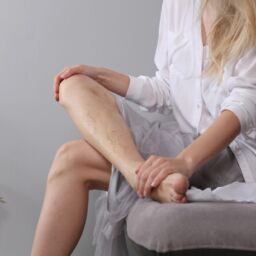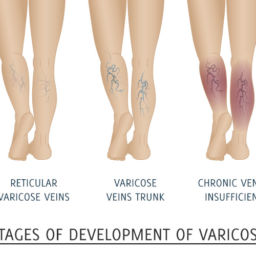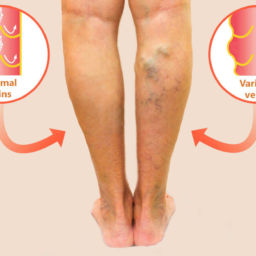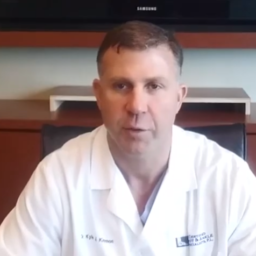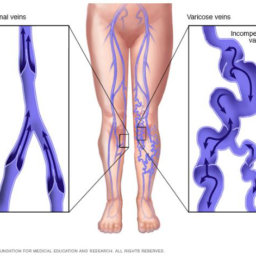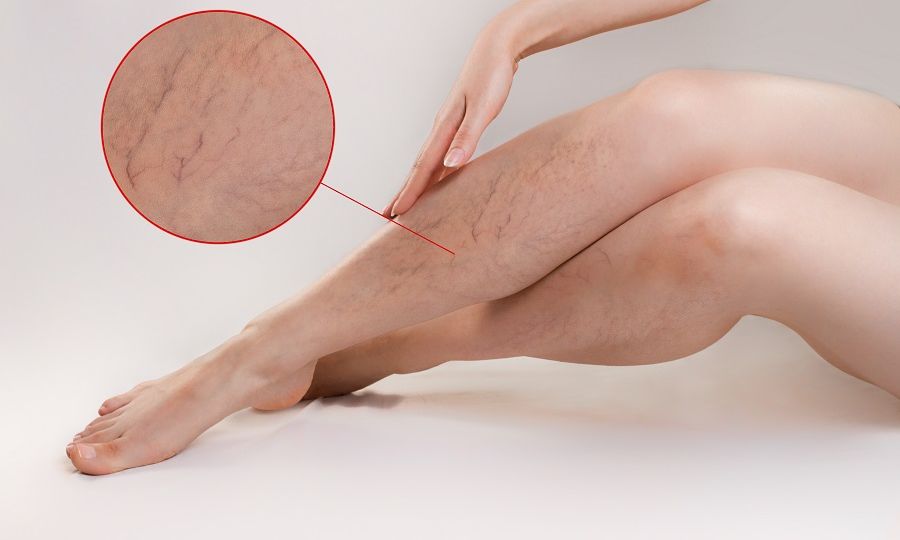
Picture yourself gearing up in your swimsuit and getting ready to go to the beach since the Covid-19 pandemic has lifted. You have your cooler filled with your choice drinks, designer sunglasses, sunscreen, and you are ready to put your toes in the sand. However as you are getting ready, and putting your swimsuit on, you notice a large bulging varicose vein running up your leg and thigh.
You begin to wonder; this looks really unsightly but is there more that meets the eye when it comes to a painful bulging varicose vein? Can this lead to a possible fatal condition? In the following paragraphs, this article will discuss the implications of venous disease.
Varicose veins could certainly be the tip of the iceberg when it comes to circulation disease, and could put patients at a greater risk for a blood clot in the upper or lower extremities.
Venous Thromboembolism
The umbrella term in the medical world is called a venous thromboembolism, or a layman’s term for a blood clot. Underneath this umbrella term there is a DVT which stands for a deep vein thrombosis. A deep vein thrombosis is a blood clot typically situated in the deep vein and a leg or an arm for example. A pulmonary embolism is a blood clot that traveled from a deep vein to a lung. Similarly a deep vein thrombosis, can dislodge and travel to several other vital organs, such as the kidneys, heart, blood vessels of the liver, or brain.
The Center for Disease Control estimates that venous thromboembolisms, or blood clots have affected as many as 900,000 Americans each year. Furthermore, the CDC estimates that 3 in 10 people both had a blood clot will have another episode within 10 years.
Consequently, blood clots can be deadly if gone unchecked and untreated. As many as 100,000 people died of blood clots each year. Even more frightening and tragic, a pulmonary embolism is a leading cause of death in a woman during pregnancy or immediately given birth to a baby.
The financial implications for treating blood clots are also very burdensome to our healthcare and economic system. Blood clots cost our nation up to $10 billion each year in terms of healthcare cost, possible surgery, rehabilitation, medication, and time loss from work. Treatment can be as much as $15-$20,000 per patient and often results in readmission due to secondary complications.
Things to be aware of WHEL DEALING WITH VARICOSE VEIN:
Blood clots can happen to anyone. I personally recently diagnosed a blood clot in the lower extremity of a relatively healthy 41-year-old female in the military. However, they are largely preventable and treatable.
Over a century ago, a German physician and anthropologist named Rudolf Virchow described in detail three factors that are crucially important in the development of a venous thromboembolism or blood clot.
- The first is venous stasis, or when the blood within the veins is not moving properly or enough.
- The second is the activation of blood coagulation, due to certain medicines, a physiologic state, severe trauma or injury.
- The third is due to direct vein or endothelial damage.
These factors have come to be known as the Virchow triad, and help clinicians and scientists understand and treat diseases related to blood clots.
The following conditions are more susceptible to a blood clot:
- Hospitalization and Illness
- Major surgery particularly of the pelvis, abdomen, hip, or knee
- Severe trauma such as in a vehicle accident
- Injury to a vein that may have been caused by a broken bone or severe muscle strain
- Hip or knee replacement surgery
- Cancer and cancer treatments
- Use of birth control methods that contain estrogen including oral medication patches or rings
- Pregnancy, which includes up to 3 months after the baby is born
- Use of hormone therapy that contains estrogen
- A family history of blood clots
- Obesity
- Smoking
- Extended Confinement to bed
- Sitting too long especially with the legs crossed as during long drives or long flights
- Certain heart conditions and arrhythmias including atrial fibrillation.
Status post Covid-19 infection
Some of the active and positive symptoms of a blood clot or underlying venous disease of the affected extremity include: redness, warmth, pain, swelling, leg discoloration, heaviness, itchiness to the lower extremities. If one has a fever or difficulty breathing, there could be a clot that is dislodged to the lungs.
If you or a loved one are aware of any of these signs or symptoms of varicose vein, please reach out to one of our Certified Foot physicians to appropriately screen and set you up to have this potentially dangerous condition treated.
Dr. Felipe Peterson, DPM, DABPM
Certified Foot and Ankle Specialist – St. Petersburg, Florida
